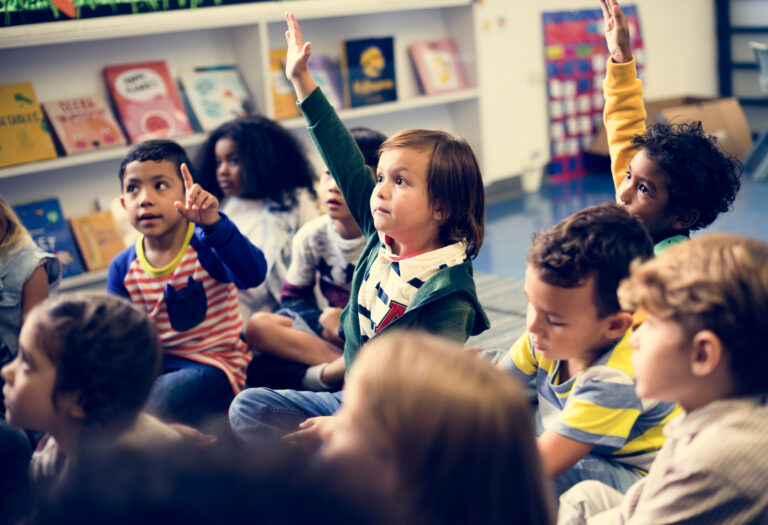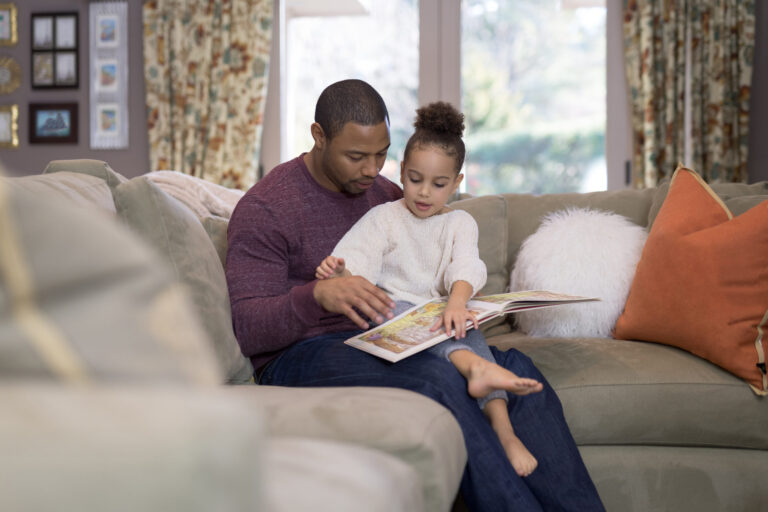When you think of literacy, the first things that come to mind are probably reading and writing. And while reading and writing are huge parts of literacy, children develop literacy skills before they can even speak. When children understand words and language, they’re using the building blocks of literacy. And literacy development, especially at a young age, sets the stage for a child’s future success. The more exposure they have to words and language at a young age, the more likely they are to do well in school, interact with others effectively and become independent and successful adults.
From birth to pre-k, children’s brains develop faster than at any other point in their lives. They are constantly learning and are ready to take in the world around them. Unfortunately, many children do not have the same access to the variety of words and language they need. In fact, studies show that by the age of 3, children from low-income families have encountered 30 million fewer words than children from wealthier families.
As a parent or early childhood educator, you play a vital role in bringing the power of language to children. You can help them develop the literacy skills they need by helping them watch, listen, understand and speak.
How do we promote literacy in young children?
Even before children know how to speak, you can have conversations with them. Early childhood educators and parents can engage in “responsive interactions” with even the youngest children, where adults and children respond to each other and become conversational partners.
Responsive interactions use five key elements:
Tuning in.
Pay close attention to every attempt children make to communicate. Get down on their level by sitting on the floor with them or have them sit in your lap. Observe what they’re looking at or doing. Take an interest in what they’re doing and describe it to them. Use phrases such as “I see you are…” or “I noticed you…”. Give them a chance to respond, even if they can’t use words yet.
Facial expressions.
Your face can do a lot to show what a word means. Smile when you say the word “happy” or use a surprised look to convey a shocking point in a story. Children can start to connect words and their meaning based on the expressions you use.
Touch.
Pairing touch with talk increases infant learning. Have children sit in your lap or give them a hug to create a stronger bond between you and them. Create a warm and loving environment to foster learning.
Gestures.
Use gestures with words to help children understand the meaning of a word. If you say “stretch,” extend your arms out so they can see the word in action. You can also mimic what they are doing and describe their actions. This helps them make the connection between their actions and words.
Child-directed speech.
Speak in a way that helps keep children’s attention. Try using a high-pitched voice, singing a song, and stretching out words. This child-focused speech helps hold their attention longer and can give you more opportunities to expose them to more words.
Tips for Parents:
- Use new words! Expose children to as many words as possible. Narrate what you see them doing or looking at and model the words for your child to use in the future.
- Get on their level. Sit on the floor and interact with them at eye level. There’s no substitute for face-to-face interaction.
- Respond to their interests. Be present and available to share language with them. Incorporate language into your daily activities and routines. Whether you’re washing their hands, changing their diaper, or sitting with them during lunch, there’s always an opportunity to respond to what they’re interested in.
Tips for Educators:
- Build strong relationships. The relationship you have with your students is at the center of learning. Be present and engage with your students. Set the tone for the day by giving each student a warm greeting and help them feel loved and included.
- Focus on responsive interactions. Having language-rich interactions throughout the day helps your students build their understanding of language. Keep in mind that your responsive interactions don’t have to be planned activities. You can incorporate responsive interactions in every part of your day from snack time, to outdoor play time, nap time, to when they head home.
- Use child-directed speech. Try singing a song or using a warm, high-pitched tone when talking to your students. Child-directed speech draws their attention to the language they crave. Make sure you respond to any attempt your students make to engage with you. This shows them they are conversational partners with you!
Whether you’re a parent or an early childhood educator, you play a vital role in helping children develop the building blocks of literacy from an early age. For more information about the power of language, start training with Read Right from the Start today.



